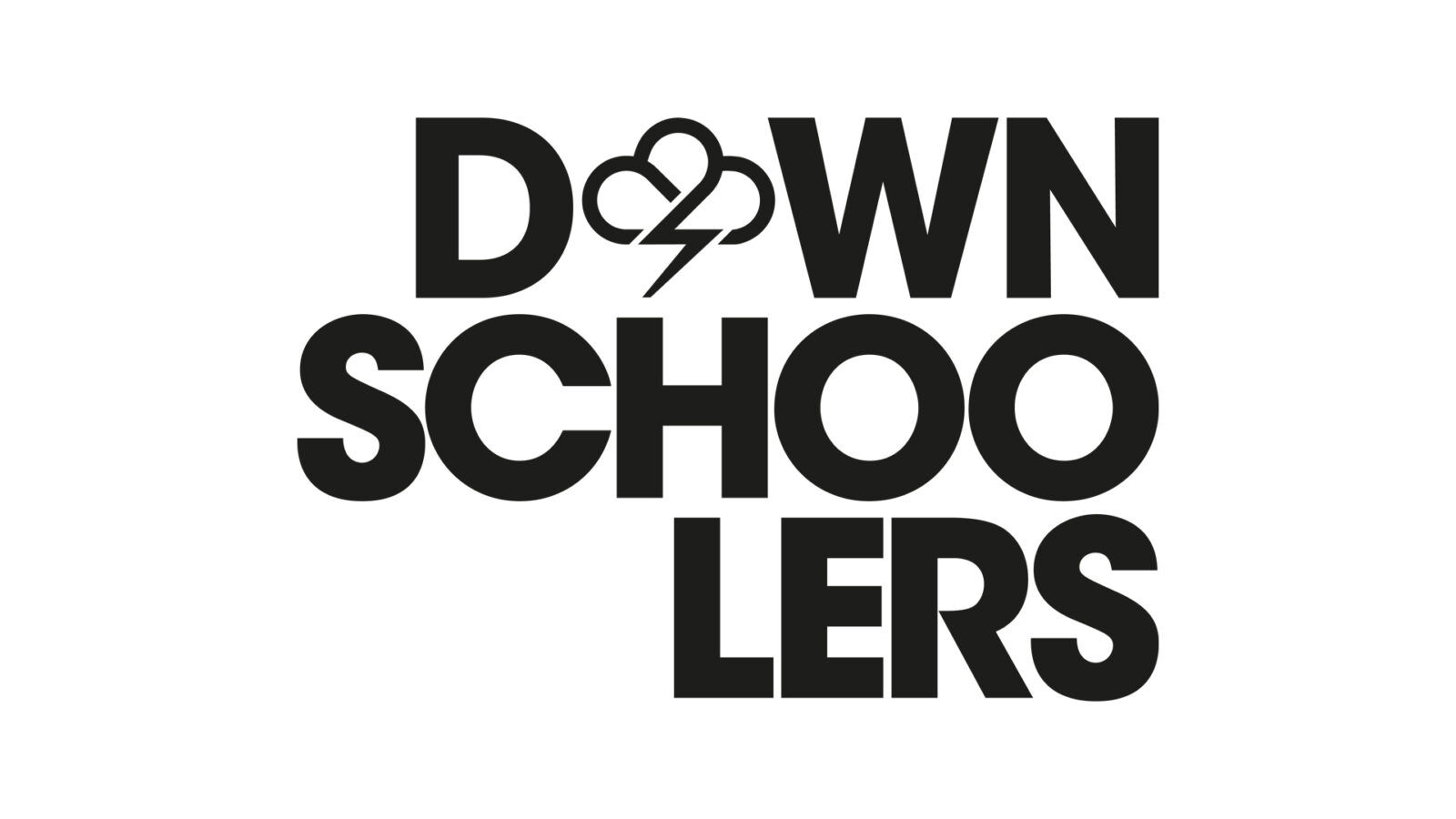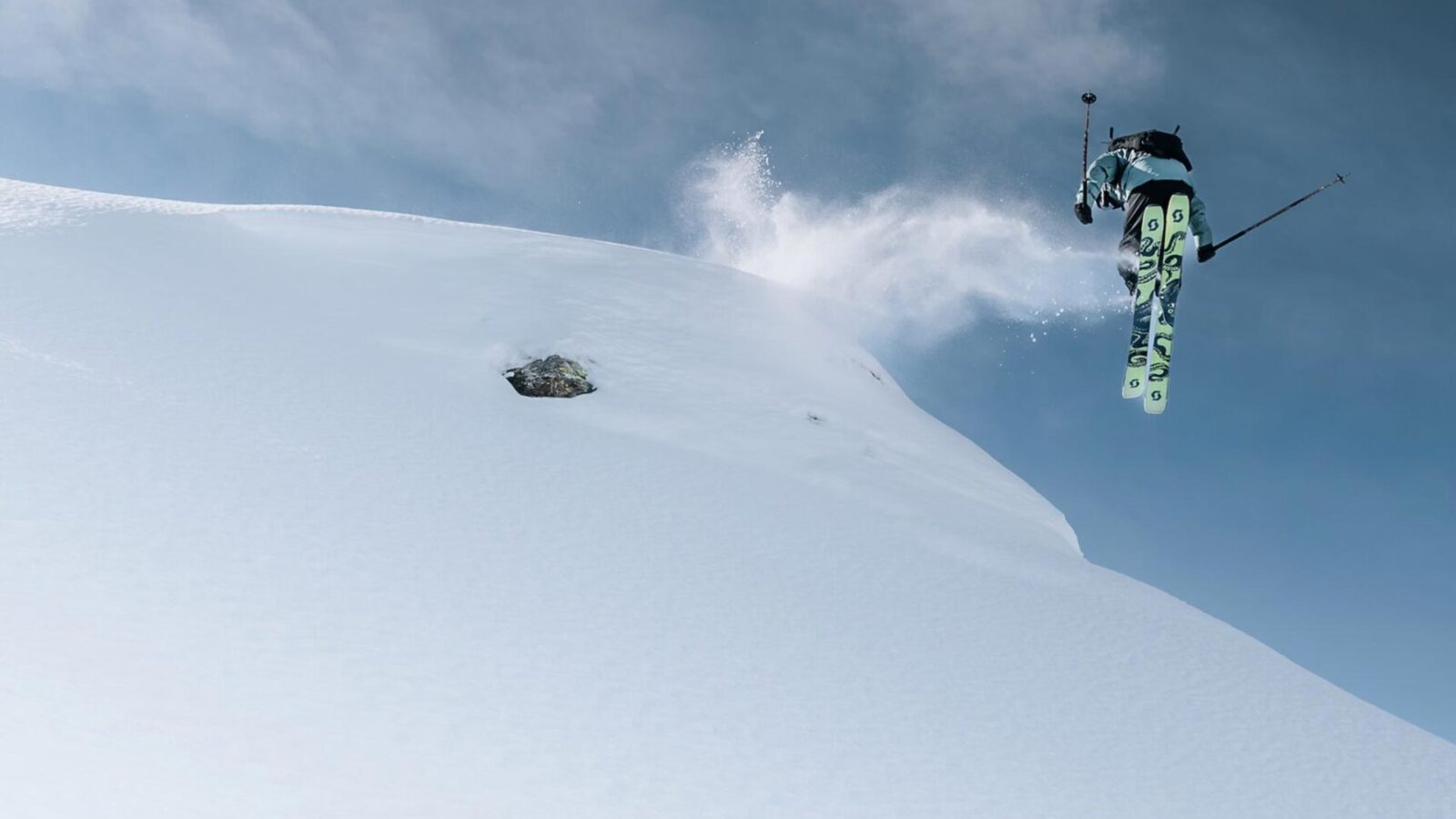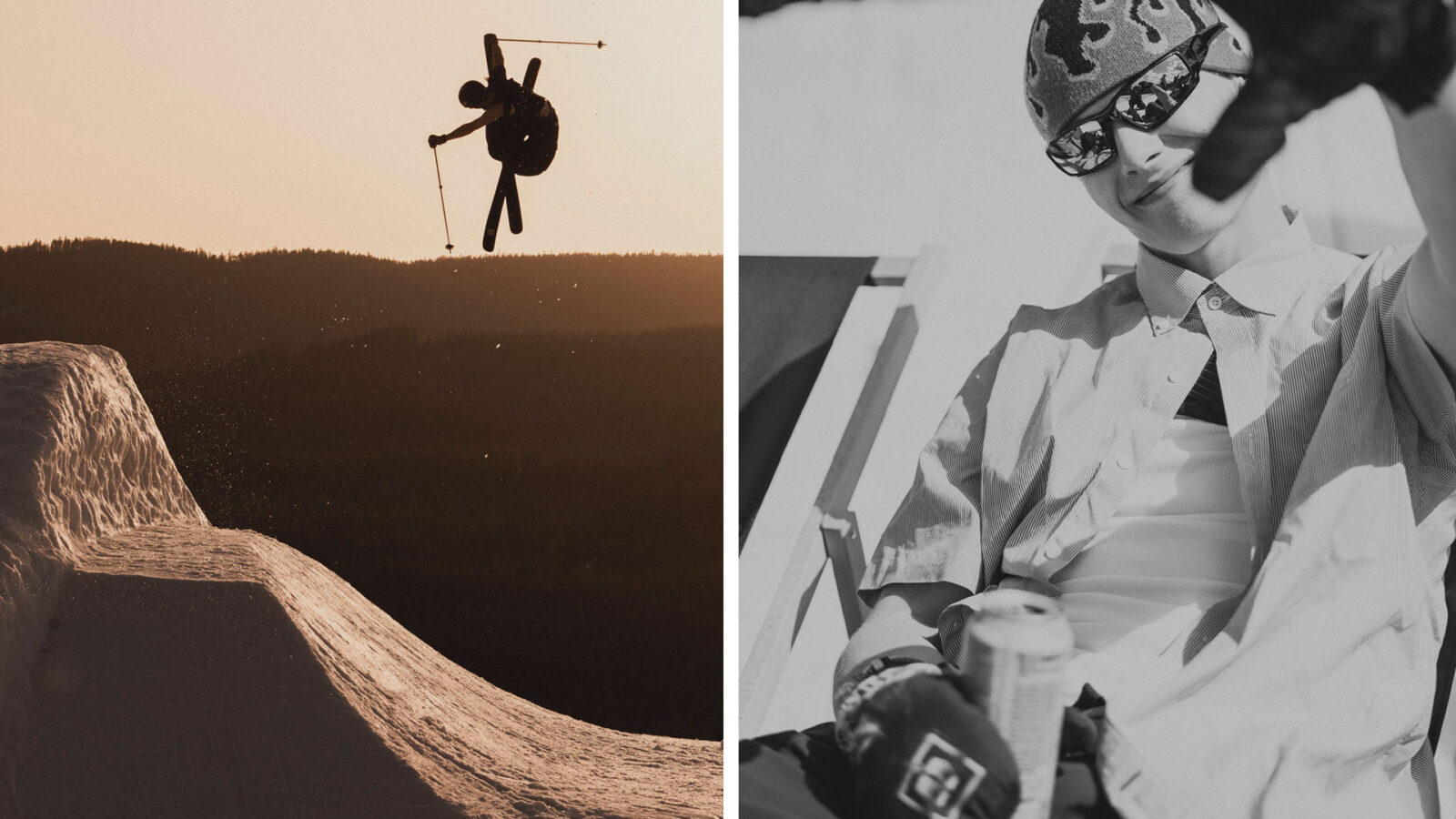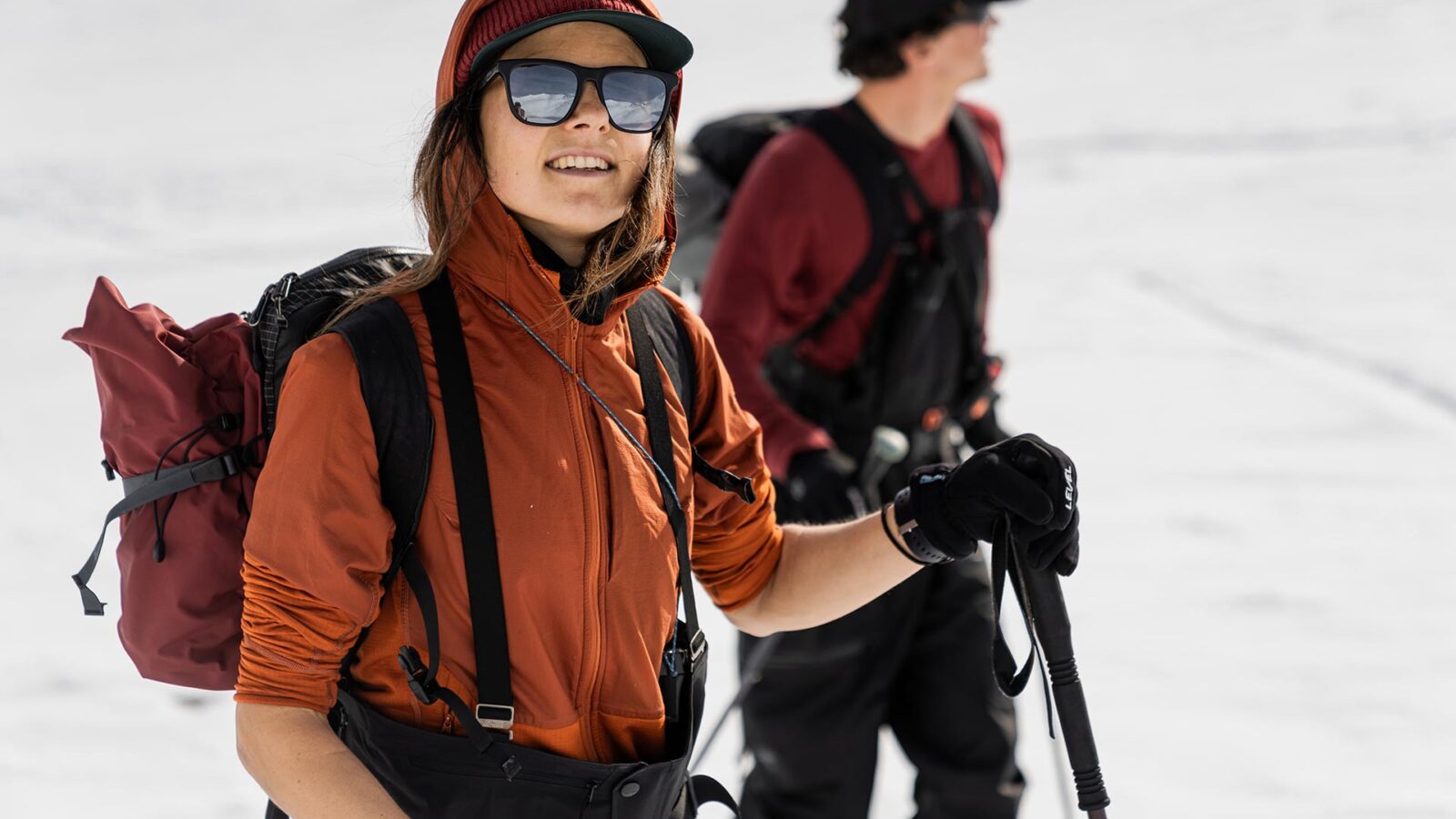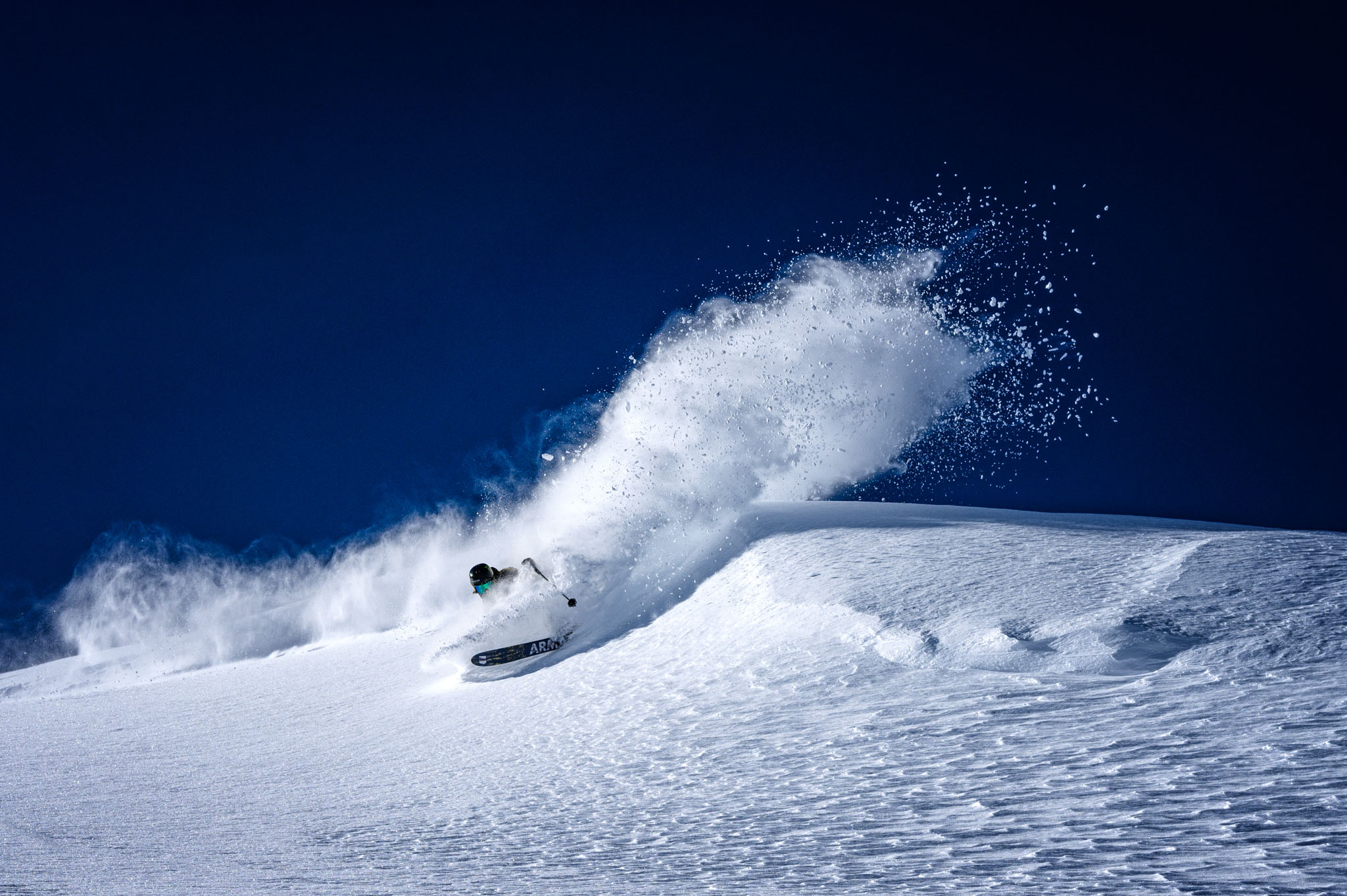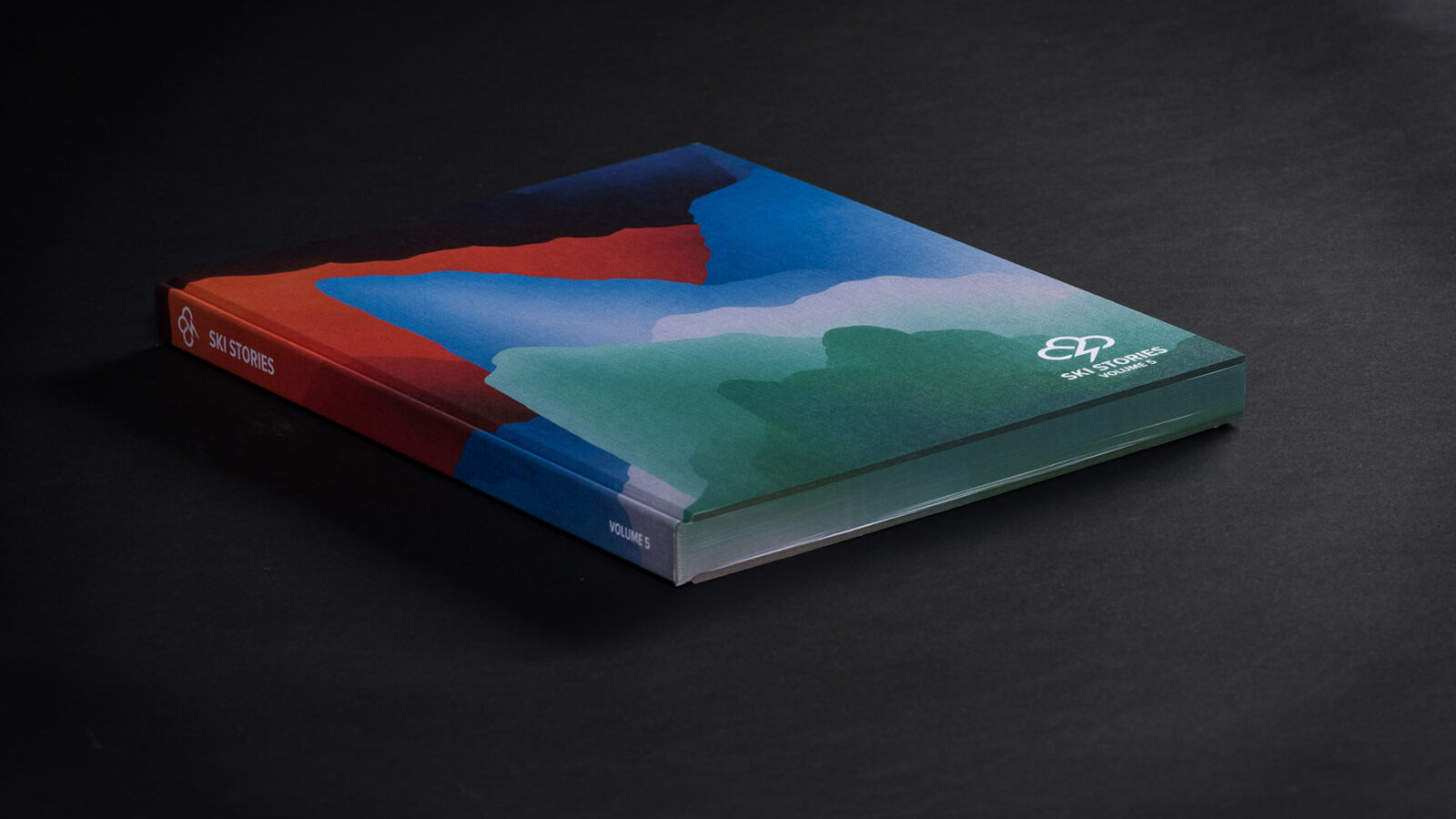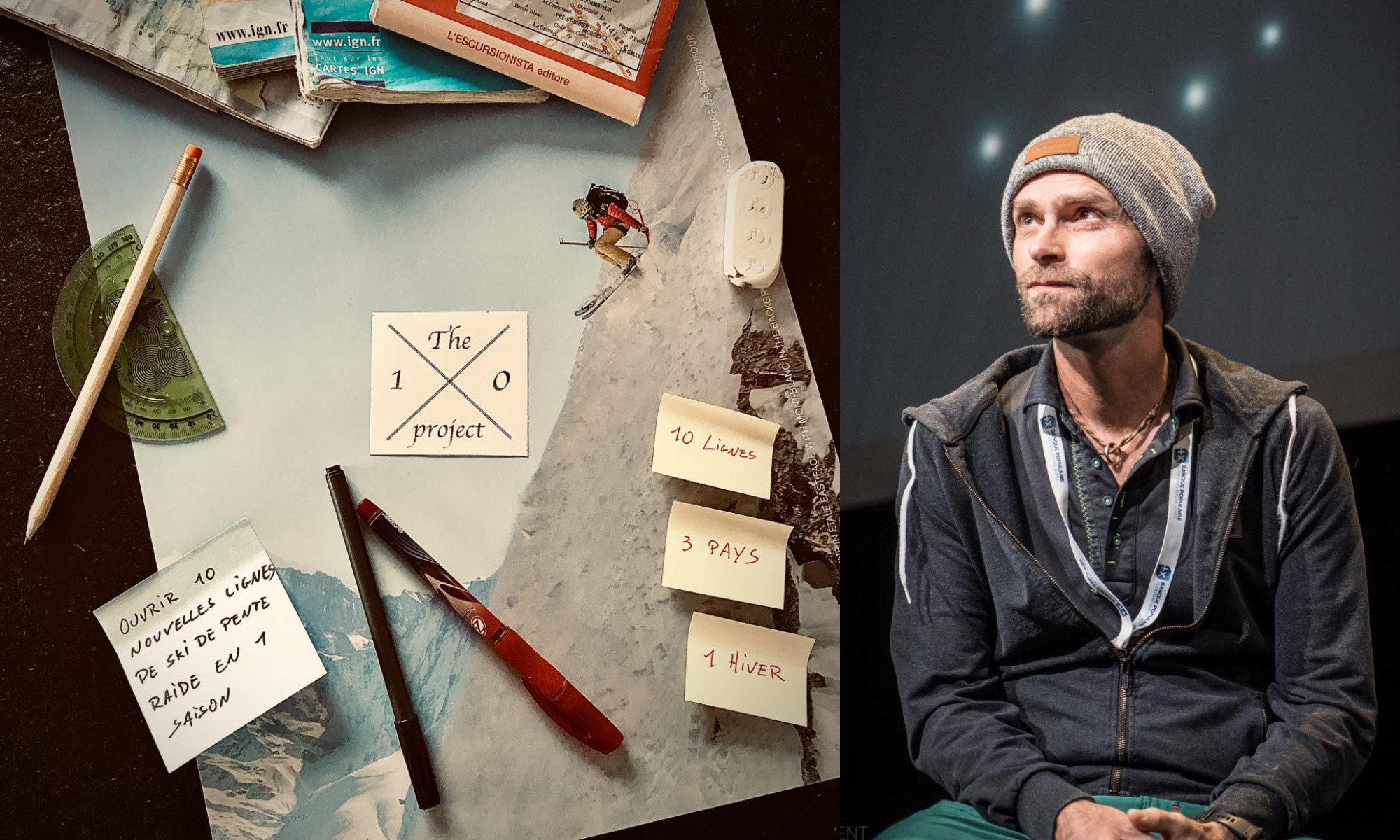
Stories
The 10x Project: Chasing First Descents in the Alps with Paul Bonhomme
What does progression look like in big mountain freeriding? How about creativity? Is it bringing a new style to old lines, like Tof Henry and Jérémie Heitz? Or is it establishing new lines that have never been skied before? How do you find new lines in mountains that have been skied for hundreds of years?
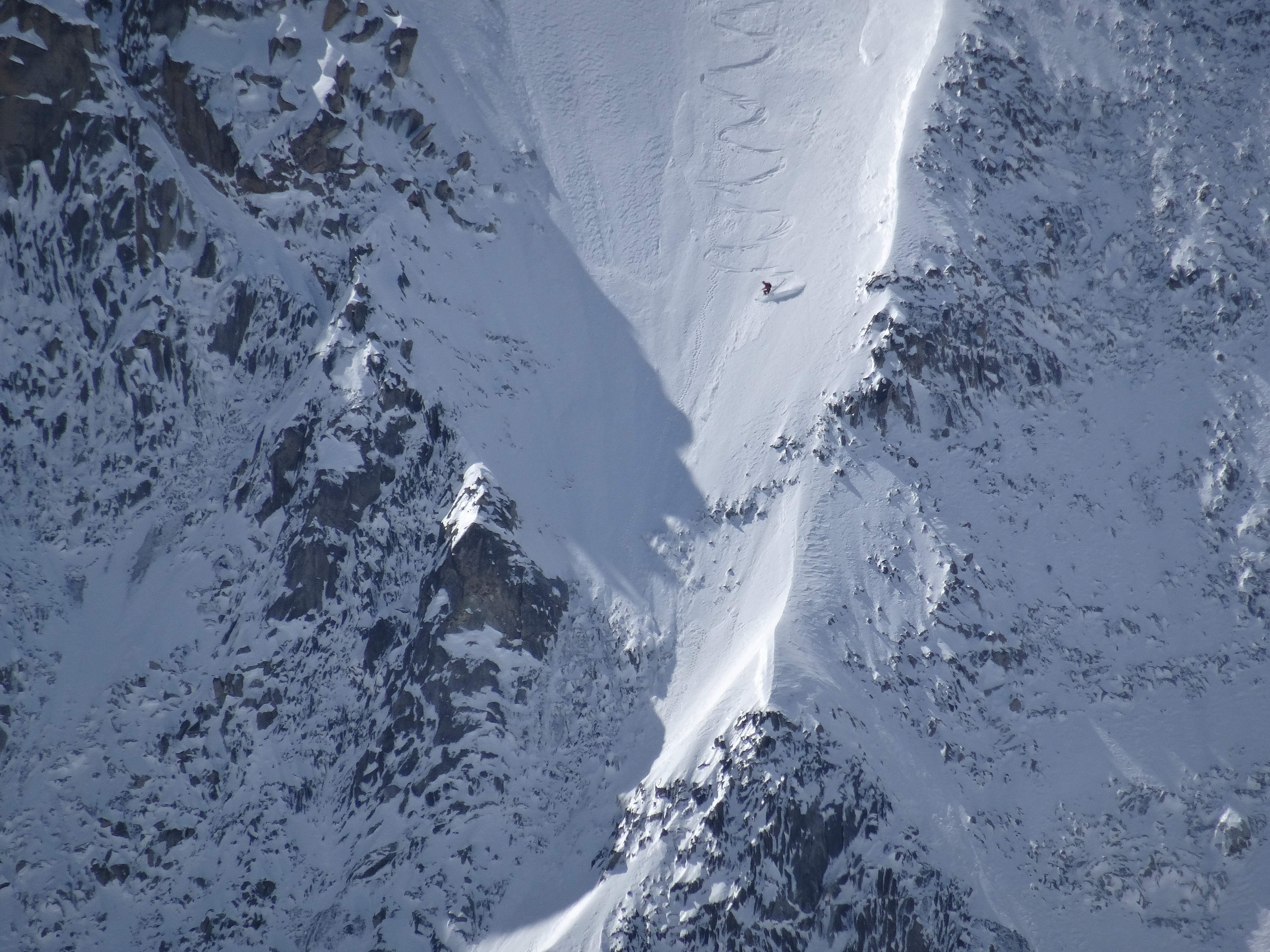
Seriously steep. Photo: Philippe Lachaud
Paul Bonhomme first popped onto my radar after he and Vivian Bruchez completed the first descent of the Secret Garden (5.4/E4, 650m) on Pointe de Blonniere in early January. Since then, the French mountain guide has been quietly ticking off some of the last unskied lines in the Alps as a part of his 10x Project. The project is simple: open ten new, unskied routes in France, Italy and Switzerland during the 2020/21 ski season. Oh yeah, the lines have to be 500 meters in length, a minimum of 50 degrees, and must be completely human-powered: no lifts, no sleds, no helicopters.
So far, he’s scored seven first descents this season:
- The Secret Garden / Le Jardin Secret (650m, 5.4/E4), Pointe de Blonnière, France
- Spur of the Acrobats / L’éperon des Saltimbanques (1200m, 5.4/E4), North Face of Chaperon, France
- The Secret of Maria / Il Segreto di Maria (1100m, 5.3/E4), Rocca Bianca, Italy
- Tears of Ulysses / Les Larmes d’Ulysse (600m, 5.3/E4) Pelago Northeast Spur, France
- The Cathedral / La Catedral (1600m, 5.5/E4), Rochers du Rochail, France
- Head in the Stars / La Testa tra le Stelle (1000m, 5.3/E4), Tȇte Carrée, Italy
- Pillars of Bagnes / Les Piliers de Bagnes (1200m, 5.4+/E4), Combin de la Tsessette, Switzerland
Each line has required a unique combination of skiing and mountaineering skills. This means touring, glaciers, rappelling, snow, ice, and rock climbing. Secret Garden, for example, required a mix of rock and snow climbing and a 30 meter abseil, while his descent of Head in the Stars (1000m 5.3/E4) came after a monstrous 12-hour, 40-kilometer outing in Val Vény. As Downdays' resident ski mountaineer, I had to find out more.
I caught up with Paul after his descent of Head in the Stars in March. Since, he scored yet another first-descent: The Pillar of Bagnes / Les piliers de Bagnes (1200m, 5.4+/E4) on the 4000 meter Combin de la Tsessette in Val de Bagnes, Switzerland.
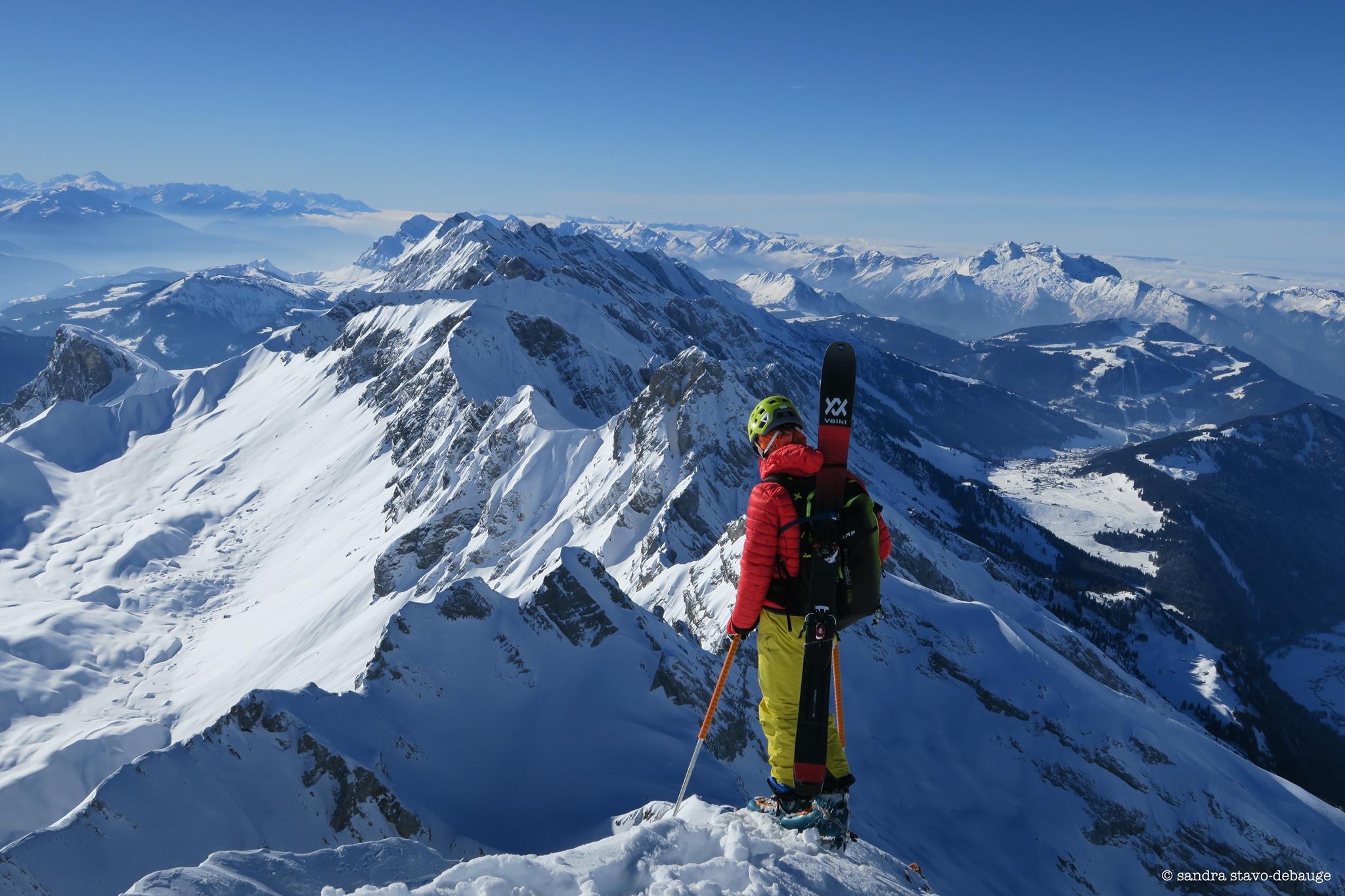
Paul in his element. Photo: Sandra Stavo
Hey Paul! Recently you ticked off descent number 6, La Testa Tra le Stelle (Head in the Stars) in Val Veny of Val d’Aosta. It took you 12 hours, 40 kilometers of travel, and 2300 meters of vertical relief, completely human powered. Can you tell me a bit about the day?
It was a special day. All the projects, all lines I did were. Every time it's a new story. This time, last week with Vivian [Bruchez], it was really special because I was expecting a line I found on the Internet. I sent the line to Vivian and he told me, "Yes, it's a great line, we will go and try it." At first I wanted to go with tents and make a bivouac at the bottom of the line, then do the line the next day. Vivian told me he couldn’t do it in two days, so we tried it in one day. We talked about taking a snow machine for 10 kilometers in Val Veny, but with the goal of the 10x Project, the ethical line was no engines, no cable cars, no such things. I told Vivian we are going to do it all with the skis. We left early in the morning, I think 3:30am, and we made it. We made the 10 first kilometers, then 10 more on the upper side of the glacier to get to the bottom of the line.
When we arrived, we checked the initial line I’d expected to do, and it was totally dry on the upper side; it was only rocks. With Vivian, we talked about doing other things on the right or on the left. We saw a little line in the sun, and it was a "no way" line: from the bottom we couldn’t see if it went to the summit or not. We thought, "No matter, we will try, we will see. It's a good day, beautiful weather, and even if it doesn't go to the summit, it will be a beautiful line to ski." So we went there, and found that the line went to the summit.
View this post on Instagram
It was really the spirit I want to valorize on my project. It's really adventurous: you go there, you don’t know if it's possible or not, and you just adapt yourself to the mountains and conditions. That way, every line really is a new adventure, a new experience. I’m never sure of what I’m going to find there.
For the line last week with Vivian, we had a 60-meter rope, we had some friends [cams], some pitons, and we didn’t use anything. But you never know if you have to use it or not. Just the preparation is an adventure.
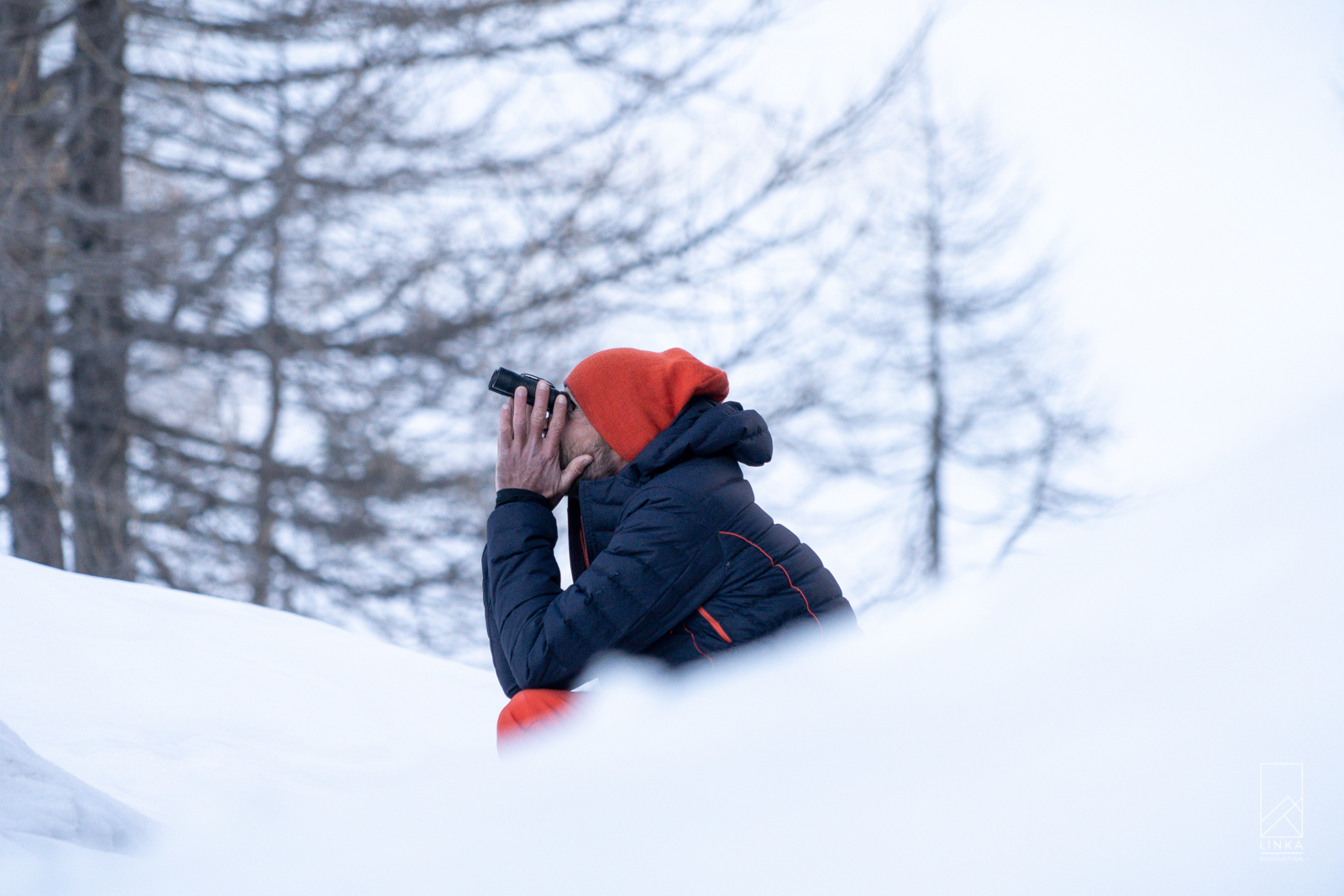
Scouting lines. Photo: Chris Angot
You've said the idea was to open 10 new lines in the Alps this season (before the end of June) across France, Italy, and Switzerland. The lines have to be 500 meters minimum, 50 degrees minimum, and completely human powered. What’s the reasoning behind these conditions?
First of all, I think in Europe, there are no more lines that are easy to ski, so the 50 degrees is a natural thing. The 500 meter long line is just to have enough aesthetics, because you can find a lot of 200-300 meter new lines to ski. 500 meters and up, it's more complicated, it makes the project more adventurous and unusual.
Also, there are lots of skiers who have already opened 10 new lines in a season, that’s for sure. But the new thing is really to try to go there in the Alps: Switzerland, Italy, south of France, Chamonix, everywhere. If you are staying in the valley of the massif or the same range, you can do a lot of lines that are unskied because you can stay on one face and do two or three lines each close to another.
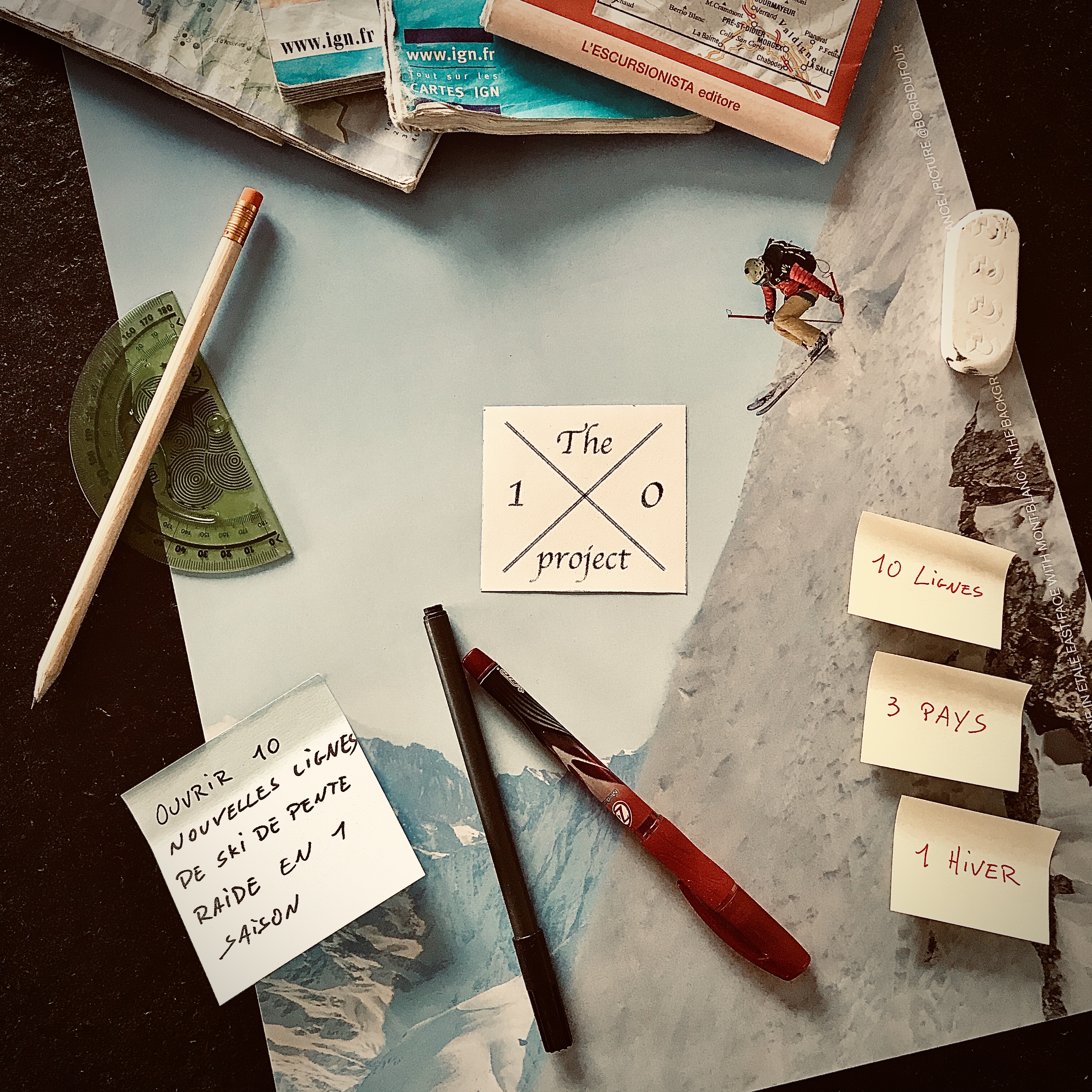
What was the inspiration for the 10 descents in this style? Where did you come up with this idea in the first place?
I try to find new projects each year. Every year I’ve got some ideas, but this year I didn’t find any new ideas, because of the situation with the pandemic. I had some lines in my head, three or four, that I was expecting to ski this year. I told myself this autumn, "You have already three lines or four lines, maybe you can make a project that is a little bit more tricky, more difficult." Not in the technical skills, but to make a real mountaineering experience in Europe, close to home, to try to open the eyes differently, and to tell yourself, "OK, we have the pandemic, we have Europe. Everyone says there is nothing new to do in Europe, or it's really rare to do something new in Europe in mountaineering." So, let's try to do something that is maybe not possible, but will be a real adventure.
It's not just one line, it's a season trying to find new lines. I’m there every month opening my eyes, looking on the Internet to find pictures, opening the maps to find where am I going to go next week, to see if there’s a line to ski.
It sounds like you're trying to capture this adventure-expedition spirit, but much more locally?
Yes, yes that's it.

No fall zone. Photo: Paul Bonhomme
The Alps have been skied for hundreds of years. How do you find unskied routes?
It's really the interesting part of this project. It was mid-October when I told myself the 10x Project could be interesting, and I had about 15 lines in my head. I went on the Internet, on the maps to find where they were, how the conditions might be, which season would be the better conditions. For the lines at lower altitudes it would be better to try them in January or February, for the lines in high altitude I can wait until June. This was the first point. After that, during the season I needed to adapt myself to the avalanche conditions, the snow conditions.
Here in France and in Europe as a whole, we had an unusual year because all the snow came from the west, northwest, southwest. It's not usual; most of the time there is some snow from the east as well. So the only slopes that were in good condition and stayed in good condition are on the east side, because the wind was blowing away from the west side and putting it on the east faces. This was another thing I was seeing this season. There was just one line this season I skied on the west side because it was really tricky avalanche conditions. I needed less snow than usual [for that line] so I went to the west side, because I knew all the snow was on the east faces.
Of the first six lines, there is only one line I expected to do in October. The other lines I found one week or two weeks before I skied them. It really depended on the weather forecast and the conditions. It's quite amazing because you have a plan in October: "In October, December, January I will begin with this, this, and this." But all the plans went down in the first days in January because of the snow conditions and mountain conditions. So you have to adapt every week.
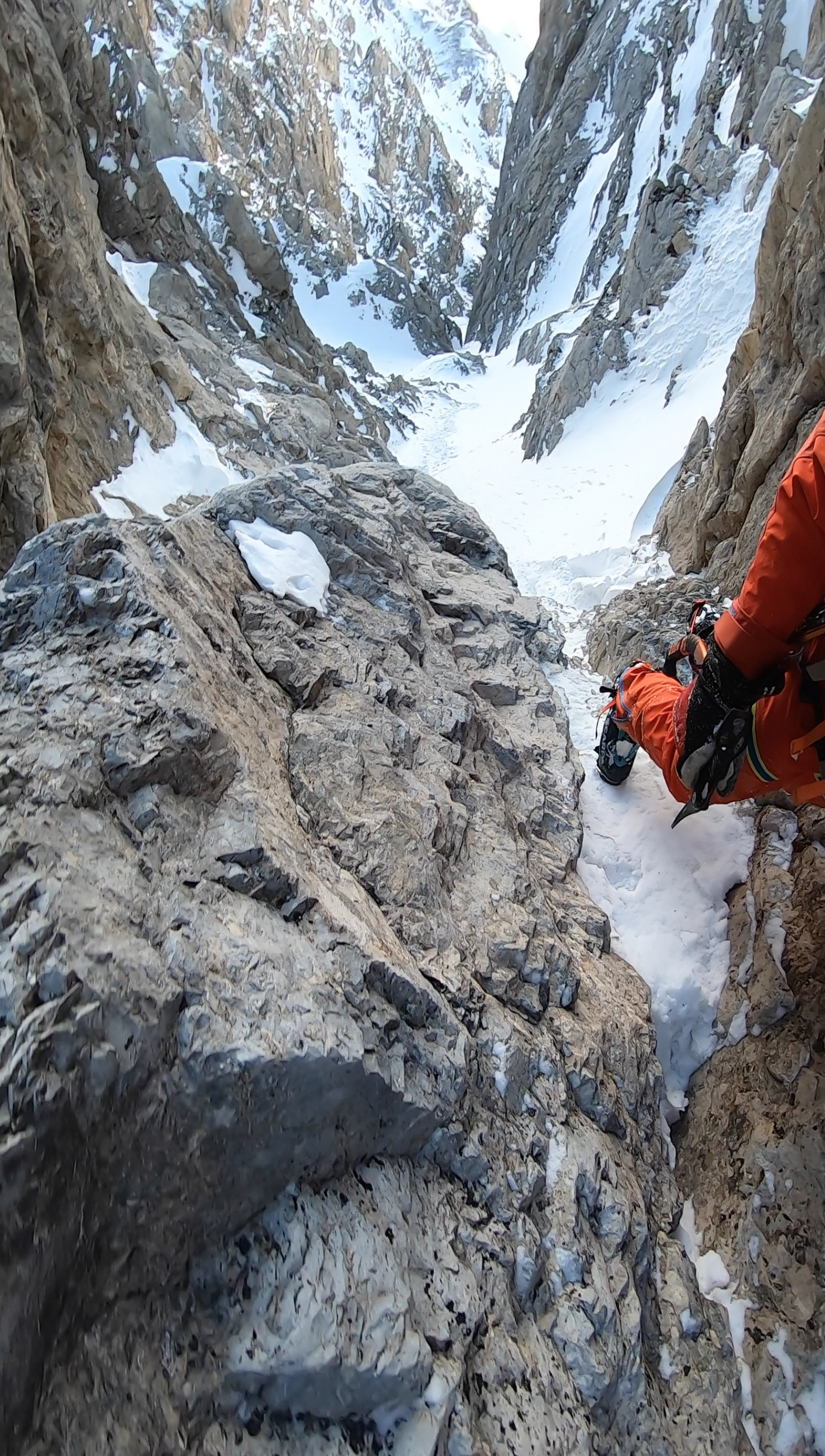
"You have to have a lot of mountaineering skills." Photo: Paul Bonhomme
You said that you had about 15 routes in mind. How many significant first descents do you think are left in the Alps?
Oh, I think there are many. For the moment, I’m expecting lines in Valais, Switzerland and around Monte Rosa, from there to the south of the French and Italian Alps. There is still an area from Switzerland, Austria, to the Dolomites where I didn’t plan any lines. So I think really there are lots of lines to open.
You have to know one thing with these new lines: they're not very logical lines. They can be very beautiful, but it's never very logical. You have to have a lot of mountaineering skills and vision. It's not just skiing, but also abseiling, and when you go up, ice climbing, sometimes a little bit of rock climbing. So I think there are no more really logical lines to open in the Alps, it's more mountaineering lines.
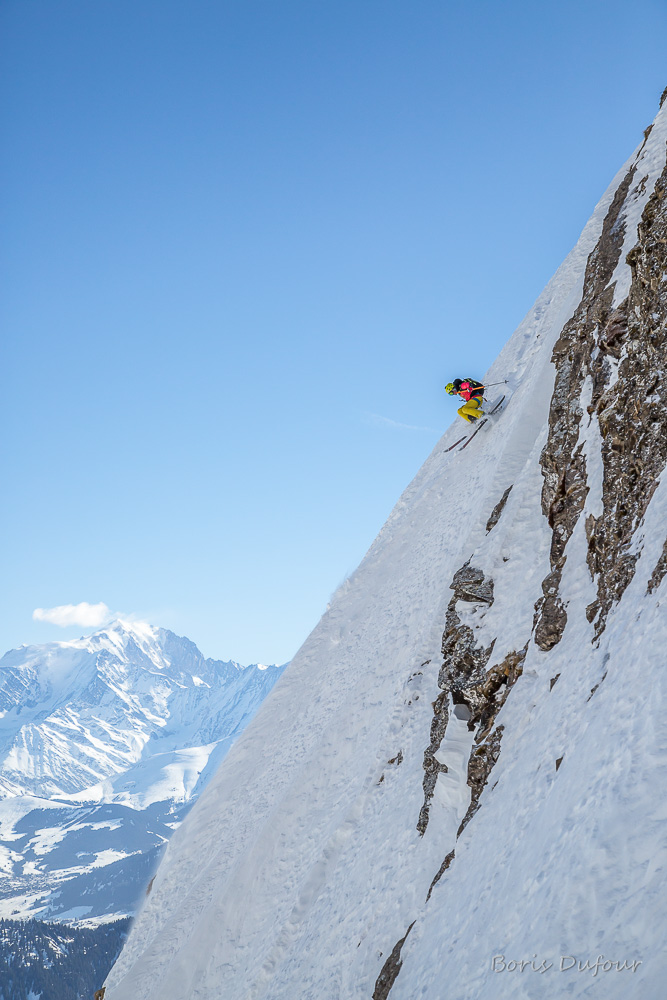
Paul in action in 2019. Photo: Boris Dufour
What sorts of hazards or obstacles do you prepare for? What's your relationship with risk and risk tolerance on these lines?
I am accepting no risk, only zero risk. On my lines it is always beautiful weather, the avalanche danger is zero or close to zero. When you are skiing down a 50-degree slope with rocks below you and you cannot fall, you need to be focused only on your technical and physical skills. You cannot manage any risk. It's the same with rockfall or something like that; if I go up on my line and I see it's too warm, or there are stones falling around me, I don’t go. It’s one of the points that's most important in such a project. It's only you and your technical and physical skills, there is no place for any [extra] risk. Unexpected things happen, but it's just how we exist in this passage. It makes it more difficult, but it's not risky. You manage with your technical skills, not risk.
You’re over halfway through this project. What have been the biggest challenges so far?
Every line was different and has different challenges. Last week it was the duration. It was a long day, so that was difficult. The one we did before with Xavier [Cailhol], La Catedral, is a 1600 meter line. It was really about physical skills. When we arrived at the bottom of the line we were totally exhausted by the concentration we needed to do it, on the way up and the way down.
The one I did in Mercantour (Tears of Ulysses, Pelago), in the south of the Alps, the huts were closed, so the day before we had to do a big way up with food and such, and it was really long. So every line is different.
The first I did in Italy, in Val Maira (The Secret of Maria, Rocca Bianca), was special because I couldn’t stay in Italy, so I needed to go from my parent’s home in the southern Alps. I had to do a four-and-a-half hour car drive to get to the bottom of the line, go up the line, and then drive four-and-a-half hours back home.
Each line was really particular. It's not about the difficulty of the line. At first, when I decided to do this project, I told myself I’m going to find some very difficult lines and that will be interesting. But the difficulty is not the interesting point of this project. It's really the story. Each story is different, not the difficulty of the line themselves.
What has surprised you the most? What have you enjoyed the most?
Like I just said, each one has been special in its own way. For example, on the Chaperon, when we did the Spur of the Acrobats, it was a 1200 meter new descent on a totally unexplored face in France. When we went down after that, all the village gave us a lot of testimonies, telling us, "It’s crazy what you did, it's just so beautiful! I can see the slope from my house!" And I was reading these testimonies, and I thought, "Oh shit, what did we do yesterday?" We just put value on this little village in France that nobody knows. Most of these people, they don’t even know what mountaineering is. It was really special.
[Following their descent of Spur of Acrobats, The village of Saint-Firmin du Valgaudemar extended an official thanks to Bonhomme and Calihol.]
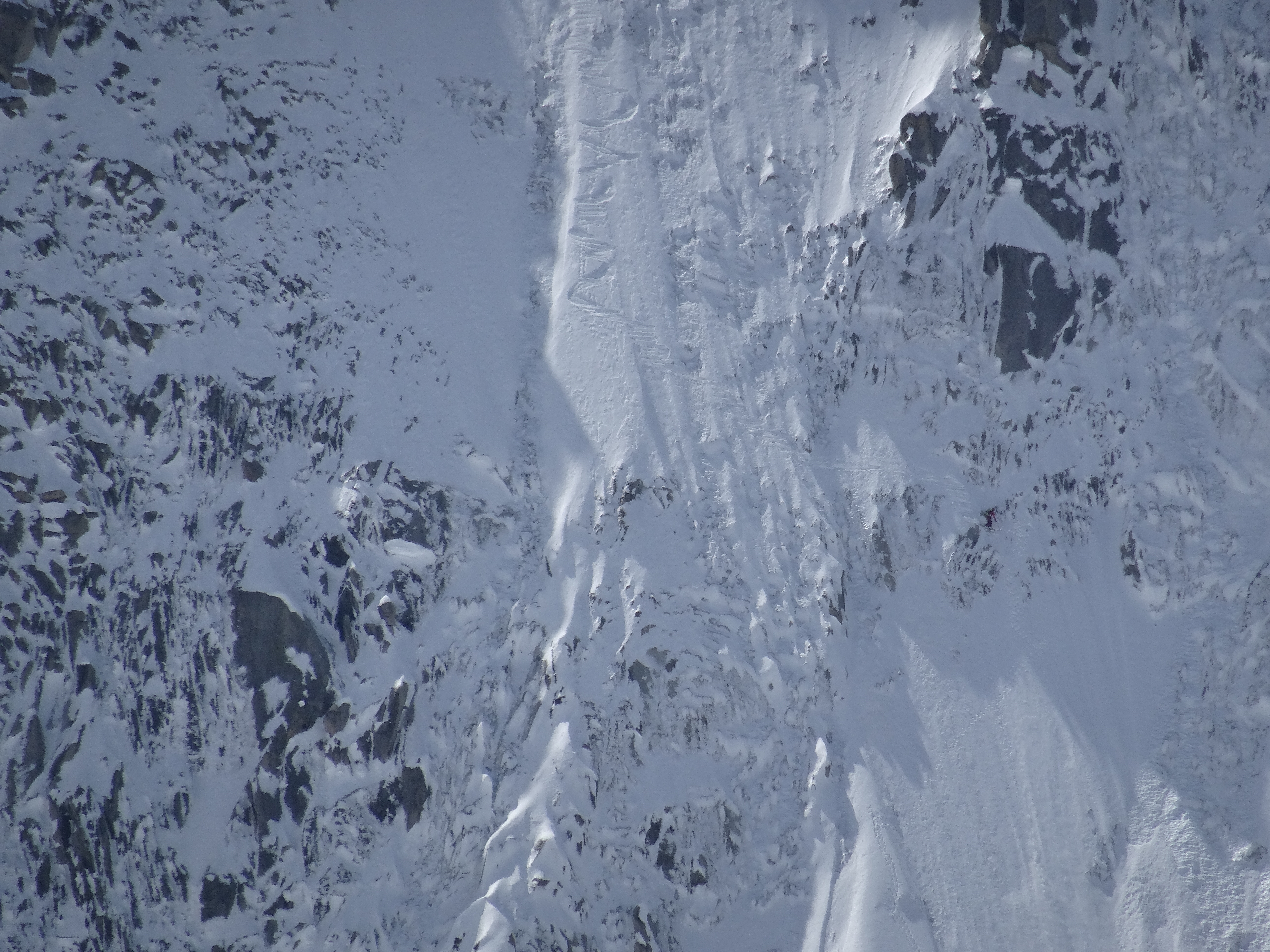
Paul picks his way through a technical exit. Photo: Philippe Lachaud
Are there any particular descents you are looking forward to, or any that you’re afraid of?
For these last four descents I really want to go to Switzerland. I don’t know if I will be able to do them, but my next goals in April will be in Switzerland. Maybe also one last one in Italy. Because of the pandemic situation, it's important to go into those countries where it's very difficult, very tough for them to deal with this situation, and to give them some new ideas, or something to think about that is not pandemic associated. And I like those countries; Valias in Switzerland, and Italy, such a crazy country.
Maybe I will not be able to do it because maybe the countries are going to close. I don’t know, but I will try.
I wanted to ask about your descent of La Catedral. There’s a bit of an asterisk on the "first descent" since as the upper 600 meters have been skied before. What’s the history behind that line?
La Catedral, like the other lines, is quite special. Ten days before doing this line I received a message from an old friend of my brother. He sent me a picture of the upper section of all the range of Rocher du Rochail in the winter, two or three years before now. I looked to the peak, and told myself, "Oh shit! That’s a beautiful, really impressive mountain!" I took the map, and I checked the mountain and the slope, and I told myself next week I have to work in La Grave, not too far away from there, so I will take my binoculars and check the line. I did that and I found the line on La Catedral. I called Xavier, and we did it on Saturday, but I was not thinking of doing the first descent. I was thinking it's a 2000-meter high slope, with a line that is maybe 1600 meters, so it's interesting. When we did it on Saturday, I put the line on Instagram, and I received a message from a ski patroller who said, "Hey, we did the upper slope already a few years ago." We did the lower section by chance, just because on these days it was good conditions, good enough to ski it down.

"Spur of the Acrobats" on the north face of Chaperon. Photo: Paul Bonhomme
You seem to bring a more classic, technique-oriented style to these steep descents. What are your thoughts on the “new style'' of steep skiing/freeriding being pioneered by riders Jérémie Heitz, Tof Henry and Sam Anthamatten?
I think we are doing things really differently. Sam and Jérémie, they are really freeriders, so they are trying to ski down as quickly as possible. And their technical skills in skiing are really impressive. But me, with Vivian and some others, we are more in the mountaineering skills than the skiing skills. Skiing for us, it's different. We are good skiers, because we need to be good to go down safely on these slopes. But we are more searching for creating something new, in the way of putting some new lines. It’s not a different way of skiing, but it's a different way of looking at the slopes.
A different approach?
Yes. We are doing different things. Not better, not worse, just different.
You are progressing steep skiing in one way, they are progressing it in another. It's not that one is better or worse, just different.
Yes. But it’s not easy to realize that we are skiing also. There are a lot of people who tell Vivian or I, "Yeah, but that is not skiing!" It’s skiing. It’s skiing. It's just skiing in a different way. We also adore skiing in a big powder situation, on big slopes, with big speed, I love that.
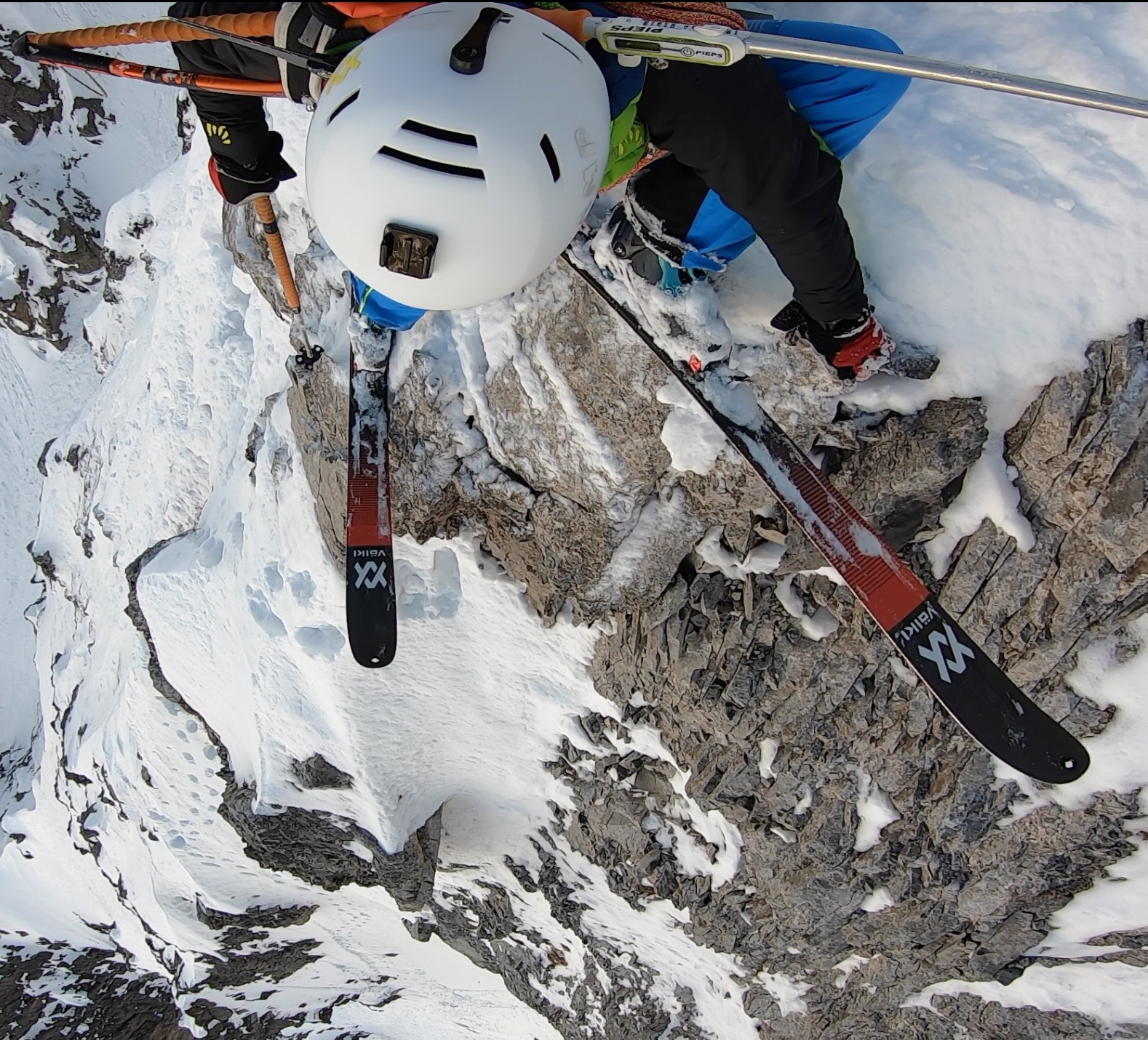
"Not very logical lines." Photo: Paul Bonhomme
How are things looking for completing the project? Are you feeling confident that you’ll finish this season?
Yes, I’m confident about it, because there are only four slopes. I’ve got a lot of possibilities, I’ve got many ideas. I think I’ve got at least eight or ten slopes in my mind that can be skied until mid-June. So I’ve got three months to do the four last slopes. Even if we are re-confined, in one month I think I could make it. After that it will be snow conditions, it will be a lot of things. I am confident in the possibility to do the last slopes, but I’m not sure if they are possible to do. I don’t know if I’m explaining well; I’m confident on the try, but I’m not confident on the realization of the slopes. I think it will be possible to try them. Are these slopes skiable? I think yes, but I’m not sure of that. But it would not be interesting if I was sure of it.
Once you finish the project, what's next?
I’ve got some projects for the summer, some completely different projects. And I will see for next winter what I can do. I don’t know yet. It’s been many years now I’ve been thinking about a project doing a touring route with steep skiing: to mix a six-day tour, staying in the mountains, and doing some new slopes during these six days.
Like as a part of a traverse?
Yes, exactly.
Anyone you want to give a shoutout to?
My sponsors, CAMP France, Volkl/Marker/Dalbello, Brubek, Aphex Gear, Scarpa, Karpos, and Suunto, they’re a new sponsor. Otherwise, there are too many people to mention. Lots of friends, lots of family, and lots of people who help me to do these stupid things.
